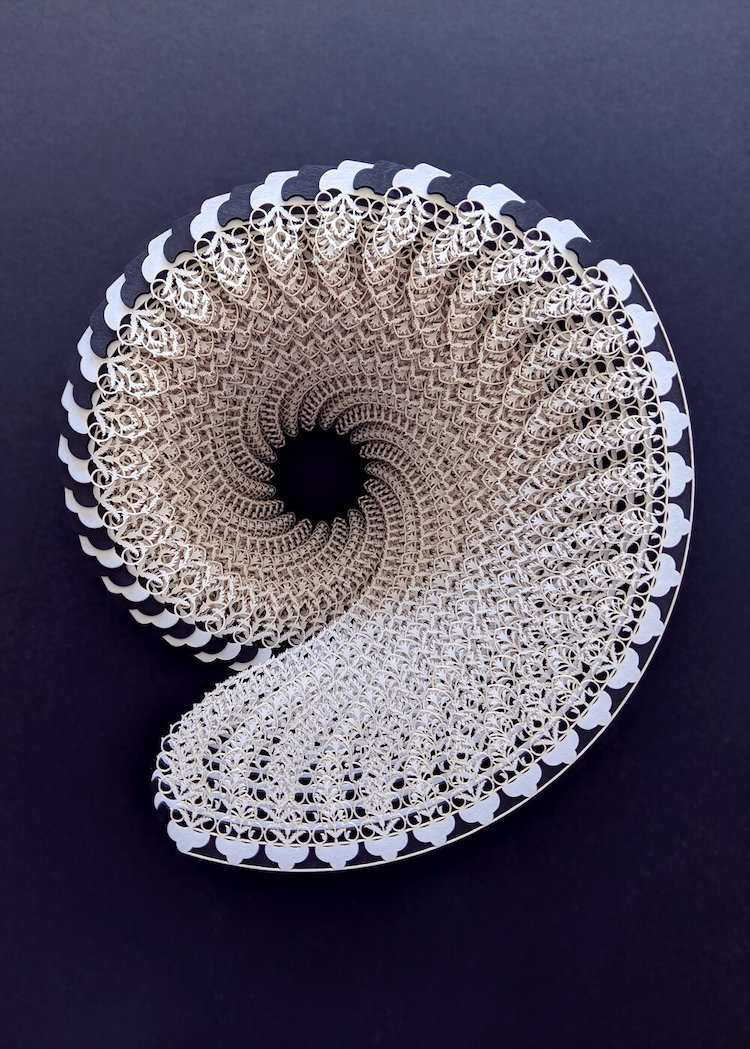
At the intersection of machine, technology, and human touch emerges Symbio Vessels, a series of intricate sculptures crafted from laser-cut paper by Ibbini Studio. Based in Abu Dabi, artist Julia Ibbini and computer scientist Stephane Noyer have been collaborating since 2017 to create incredibly detailed artworks. Their meticulous creations combine and contrast algorithmically precise patterns, design, and mechanical methods with the imperfection and organic nature of processes performed by the human hand.
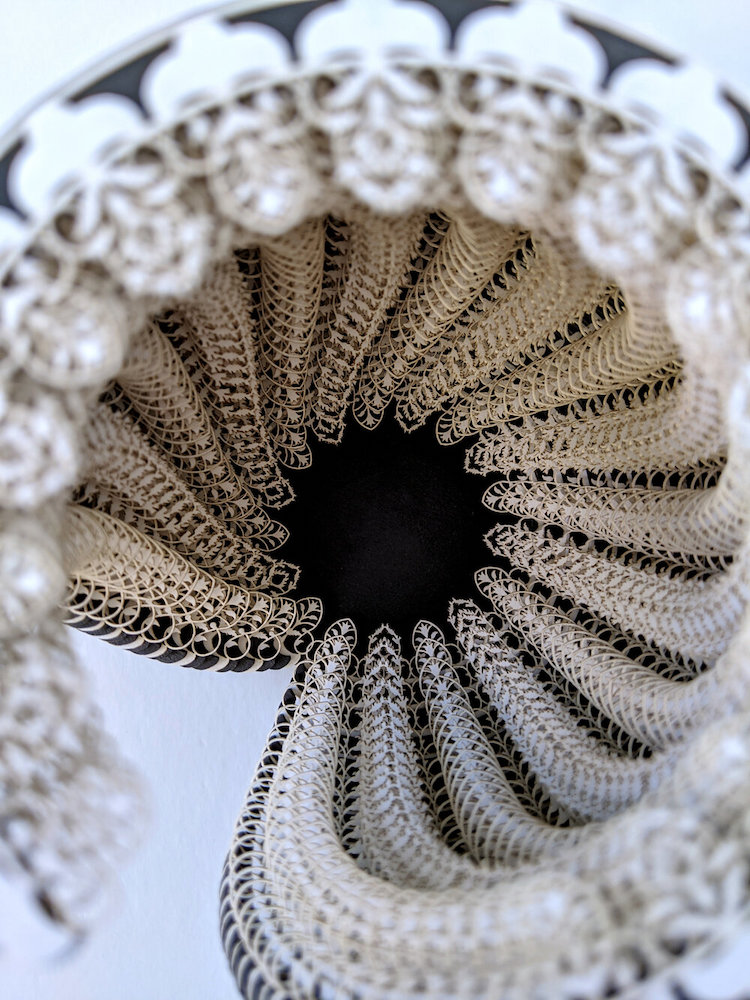
“This series plays between contrasting yet complementary, distinct but related concepts, both in the design and feel of the final form,” the artists explain. “We wanted to explore the notion of a traditional vessel (typically intended to be utilitarian and simple) and augment and contrast that by introducing abstract structural modifications, complexity and detail achievable through algorithms and computational geometry.”
Each vessel is crafted from organic, hand-drawn motifs that are then refined and arranged in geometric patterns using algorithms and digital design tools to make up the final shape. The resulting components are then fabricated using a laser cutting machine and, in the final step, each vessel is painstakingly assembled by gluing the laser-cut paper layers together by hand. Despite the time-consuming nature of this part of the process, the artists believe that “it is the flaws which come with the human hand that produce the beautiful end result.”
To see more of Ibbini Studio’s remarkable work, you can visit their website or follow them on Instagram and Facebook. Scroll down to see more impressive images of their series Symbio Vessels.
Abu Dabi-based Ibbini Studio uses algorithmically derived patterns to create intricate sculptures meticulously hand-crafted from laser-cut paper.
In this series, called Symbio Vessels, they wanted to explore and amplify “the notion of a traditional vessel,” which is usually simple and utilitarian.
The resulting sculptural pieces are mind-blowing with their intricate detail!
Watch this video for a behind-the-scenes look at the process.

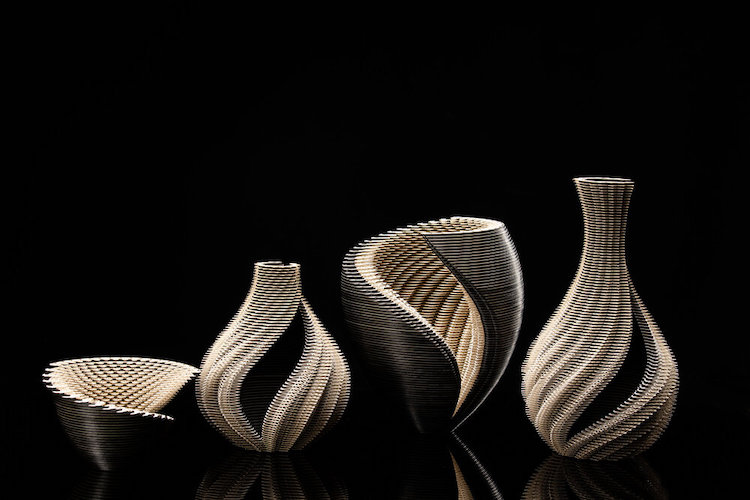
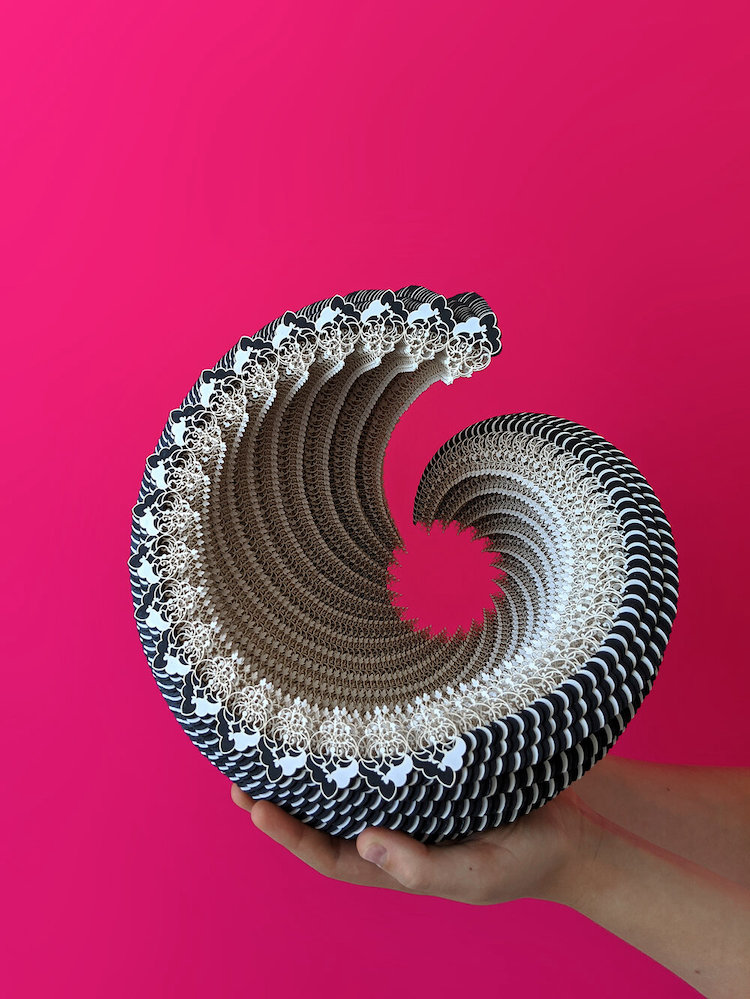

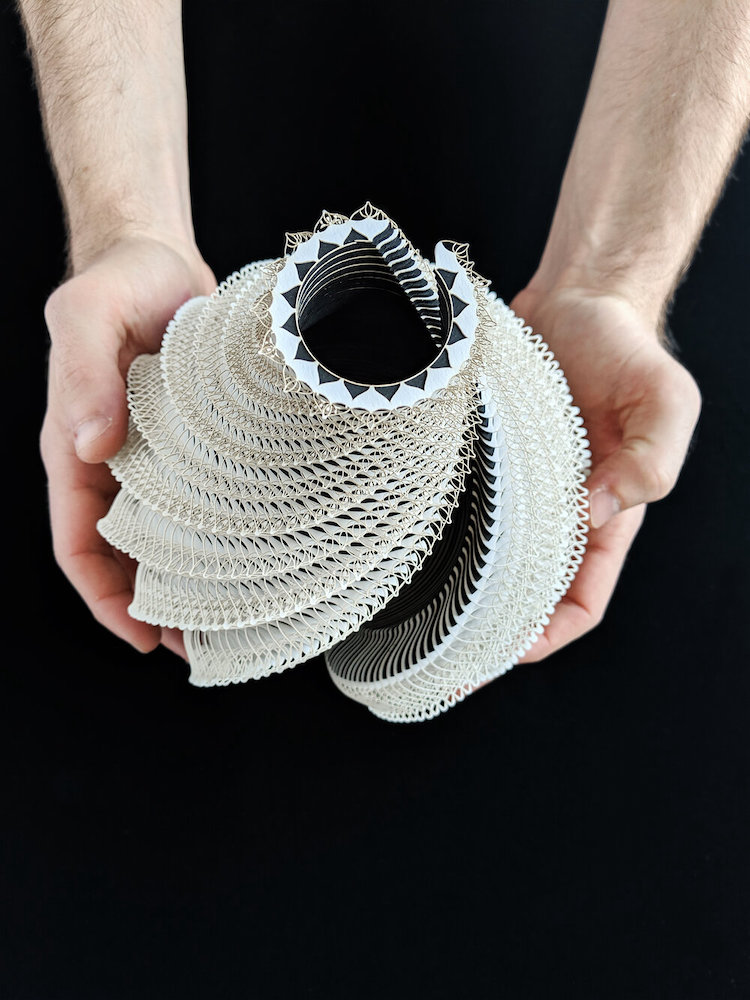
Leave A Comment